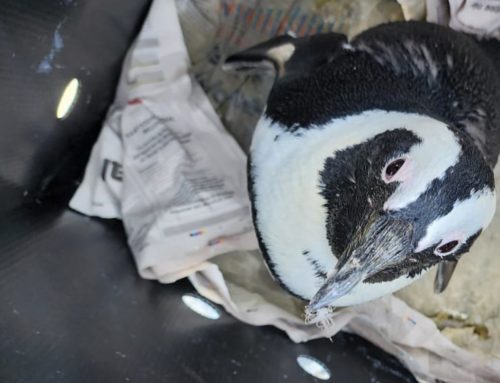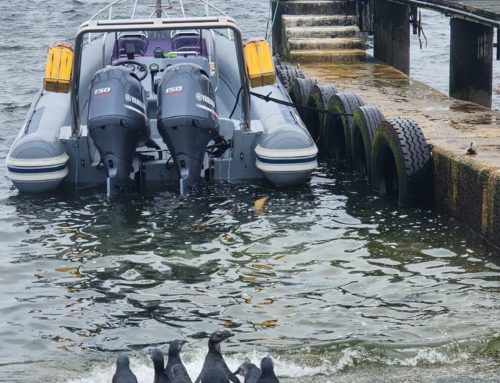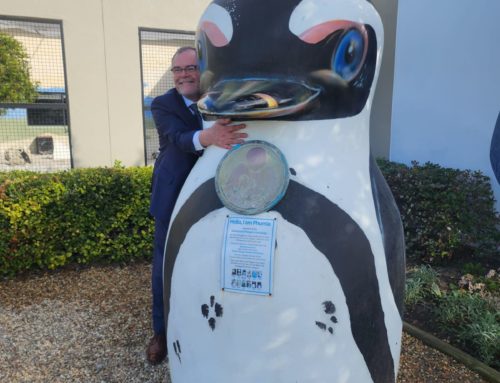For our September edition of Marine Evenings, hosted at the Great White House by the Dyer Island Conservation Trust, we dived into the captivating and awe-inspiring world of the ocean’s gentle giants – the sunfish.
For this special edition, we’ve invited Ralph Watson, the Head of Research at the Dyer Island Conservation Trust, to be your guide through the mysteries of these fascinating creatures. Often spotted frolicking in the waters around Dyer Island, sunfish have become a source of wonder and delight for our clients aboard our shark- and whale-watching vessels.
Ralph’s insights and discoveries will take you on a thrilling voyage into the depths of the ocean, revealing the extraordinary secrets of these seemingly unassuming creatures. Join us as we embark on an adventure of knowledge and exploration, and prepare to be amazed by the incredible world of the sunfish. Enjoy the read!
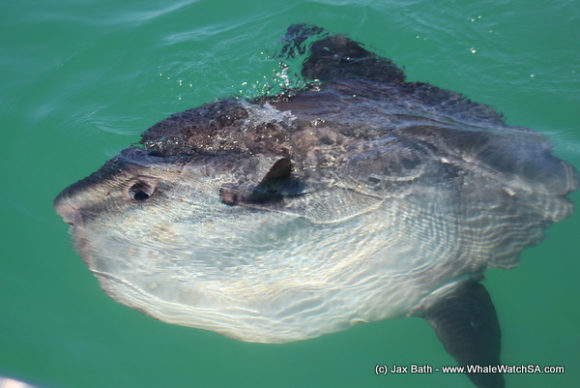
Part 1: Sunfish Sightings Surge In the world of marine science, discoveries sometimes emerge from unexpected sources. Since 2014, Dyer Island Cruises has been diligently recording sunfish sightings in the Dyer Island area, a task initiated by whale biologist Sandra Hörbst. These records extended beyond the usual focus on whales, dolphins, and penguins.
In 2021, Marine Dynamics Academy intern Emma Frey embarked on a mission to explore these sunfish sightings. She uncovered a whopping 176 sightings over the previous seven years, revealing an intriguing pattern—sunfish sightings around Dyer Island were on the rise.
These findings ignited our interest in these enigmatic creatures. Despite their impressive size, sunfish are often overlooked scientifically. They are, in fact, the heaviest bony fish globally, reaching over 3 meters in length and weighing up to 2.7 tonnes. The scientific community has only recently started giving them the attention they deserve.
Interestingly, sunfish begin their lives as tiny larvae, measuring just over 2mm. They are also the most fecund fish species globally, producing an astonishing number of offspring at once. In captivity, they can live up to 8 years, but in the wild, they may reach 20 years, necessitating rapid growth, with individuals gaining up to 0.5 kg per day. This means they increase in size by a factor of 60 million, transforming from minuscule fry to massive adults.
These exciting discoveries led to a scientific publication scheduled for later this year in the African Journal of Marine Science, marking a significant achievement for the Dyer Island Conservation Trust and Marine Dynamics Academy.
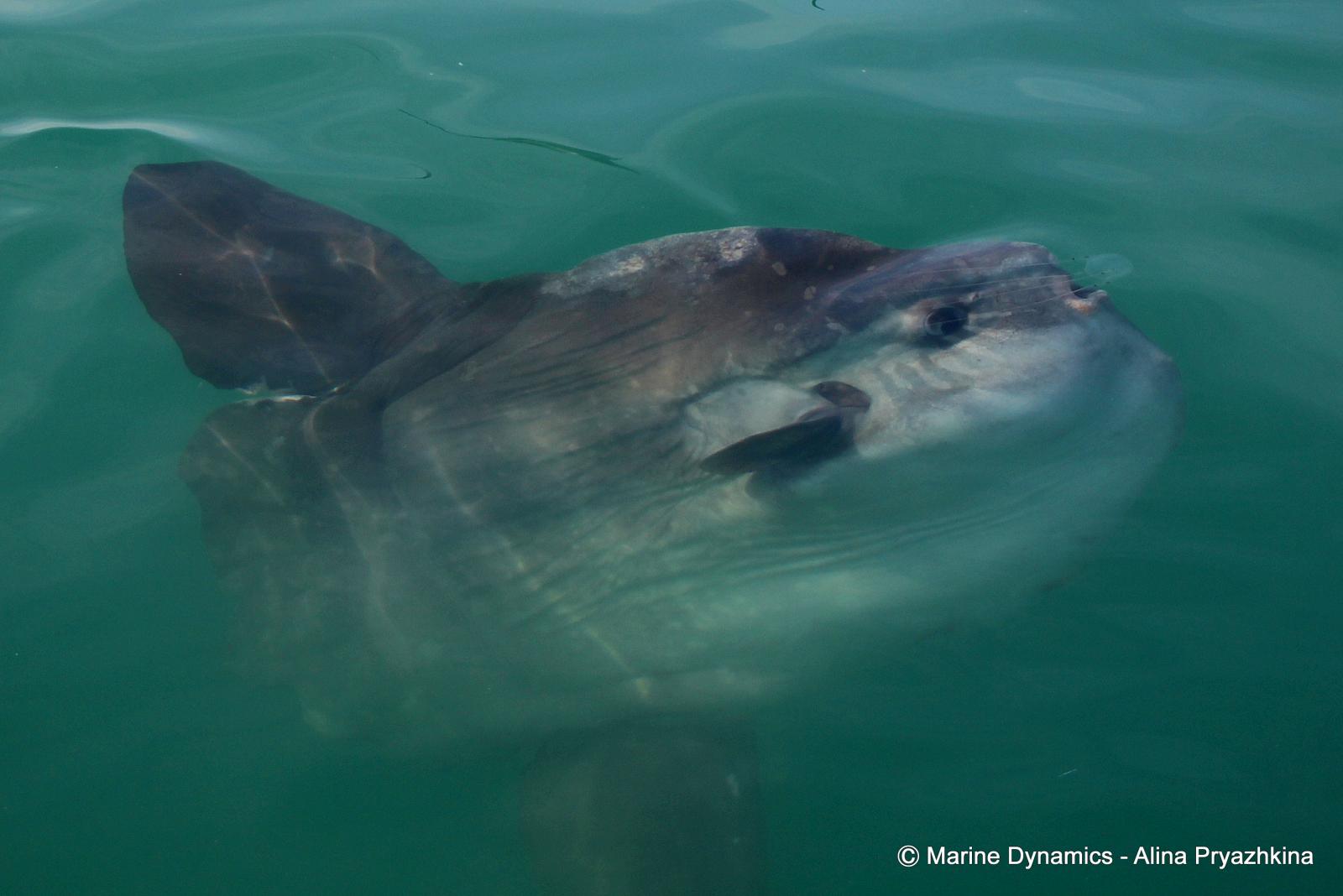
Part 2: Unveiling the Hoodwinker Sunfish Sunfish are not a singular species but comprise a group of five different species. The two smaller ones stand out—Ranzania leavis, known as the slender sunfish, and Masturus lanceolatus, the sharptail sunfish.
The Mola genus, which includes the well-known Mola mola and Mola alexandrini, has gone through reclassification. Recent genetic research by Japanese scientists revealed three species, with the missing Hoodwinker sunfish, or Mola tecta, discovered by Dr. Marianna Nyegaard and her team in 2018. This species hoodwinked scientists worldwide.
Differentiating these species can be tricky, especially as they require a closer look. On our vessels, we group them as Molidae to avoid misidentifications.
Kudos to Atlantic Abalone for reporting the Hoodwinker sunfish and the Two Oceans Aquarium Foundation for their invaluable collaboration.
Part 3: Surprising Insights into Sunfish Behavior Sunfish behavior is more dynamic than their seemingly lazy appearance suggests. Recent studies have revealed fascinating details about their habits.
Sunfish are not simply drifters; they regularly dive to depths between 100 and 200 meters (or even as deep as 1000 meters) to hunt jellyfish. Their body temperature drops at these depths, driving them to return to the surface to warm up before their next dive.
Despite their unusual shape, sunfish can move at impressive speeds and have been observed breaching fully out of the water. They can reach speeds of up to 6.6 m/s (over 20 km/h), a remarkable feat for animals weighing over 2 tonnes. The reasons behind these breaches remain a mystery and could serve various purposes, from parasite removal to communication or even pure enjoyment.
Sunfish’s exceptional muscle strength allows them to travel long distances against ocean currents. Tracking studies have shown individuals journeying across vast expanses of ocean, demonstrating their impressive adaptability.
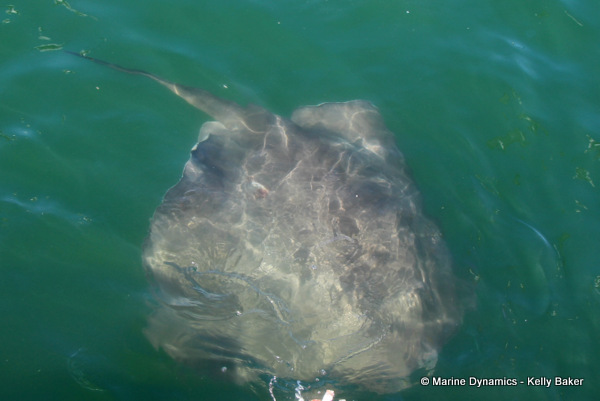
Part 4: Necropsy Reveals Unique Sunfish Anatomy Performing a necropsy on a sunfish provided valuable insights into their anatomy and biology. Sunfish are not your typical fish in many respects.
Their thick skin layer, akin to sharks, protects them from rapid changes in water pressure, as they lack swim bladders. Additionally, part of their skeleton is cartilage, likely an evolutionary adaptation to maintain buoyancy as they grow larger.
The location of sunfish organs differs from typical fish anatomy, with the bladder toward the back, the kidney near the top, and a stomach nestled behind the mouth, mostly filled with intestines.
The liver of the sunfish we examined exhibited unusual dark coloration, indicating potential health issues. The intestines were packed with worms, a common feature due to the parasite-rich environment sunfish inhabit.
Understanding their diet is essential to grasp their ecological role. Sunfish are known to consume a wide variety of prey, depending on their size and location, from jellyfish as adults to crabs, mussels, worms, and small fish as juveniles.
This necropsy, performed with assistance from the Two Oceans Aquarium Foundation, contributes valuable data to our ongoing research into sunfish species found along our coastline.
We extend our heartfelt thanks to Dr. Nathalie Viljoen and her team for their invaluable knowledge and assistance.
In the world of marine science, every discovery leads to more questions, making the study of sunfish an exciting journey filled with surprises and revelations.


